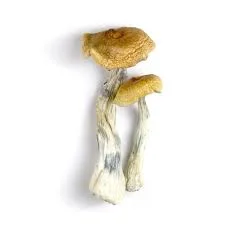Blog
tasmanian mushrooms identification

Unlocking the Mysteries of Tasmanian Mushrooms: A Comprehensive Guide to Identification
Tasmania, the island state of Australia, is renowned for its stunning natural landscapes, pristine wilderness, and unique biodiversity. Among its ecological treasures lies a fascinating world of fungi, which play a crucial role in the ecosystem as decomposers, symbiotic partners, and even as food sources. Tasmanian mushrooms, in particular, offer a diverse and captivating array of species. Whether you are an avid mycophile, a curious forager, or a nature enthusiast, understanding the nuances of mushroom identification is essential to appreciating these remarkable organisms.
In this guide, we delve deep into the art and science of identifying Tasmanian mushrooms, covering everything from key characteristics and safety precautions to the most iconic species you might encounter.
The Basics of Mushroom Identification
1. Understanding Fungal Anatomy
To identify mushrooms accurately, it’s important to understand their structure. Key parts of a mushroom include:
- Cap (Pileus): The often umbrella-shaped top of the mushroom, which can vary in color, texture, and size.
- Gills (Lamellae): The structures underneath the cap, where spores are produced. Not all mushrooms have gills; some have pores or spines instead.
- Stem (Stipe): The stalk that supports the cap. Its presence, texture, and size can aid in identification.
- Spores: Microscopic reproductive units, the color of which can be critical for identification. A spore print can reveal the spore color.
- Veil: A membrane that can cover the cap or gills in immature mushrooms. The remnants may appear as a ring or patches on the stem or cap.
2. Key Identification Features
When identifying mushrooms, consider the following:
- Habitat: Where the mushroom is growing, such as forests, grasslands, or decaying wood.
- Size and Shape: The overall dimensions and form of the mushroom.
- Color: Note the colors of the cap, gills, stem, and spores.
- Texture: Is the cap slimy, smooth, scaly, or furry?
- Smell: Some mushrooms have distinctive odors, from sweet and almond-like to unpleasantly fetid.
- Bruising or Staining: Some mushrooms change color when handled or cut.
3. Tools of the Trade
Equip yourself with:
- A field guide to Tasmanian mushrooms
- A mushroom knife or small blade for cutting samples
- A notebook and camera for recording observations
- A spore print kit (paper or glass) to identify spore color
- Gloves for handling unknown species
Iconic Mushrooms of Tasmania
Tasmania’s unique climate and geography support a rich diversity of fungi. Here are some notable species:
1. Mycena interrupta (Pixie’s Parasol)
- Description: A small, bright blue mushroom with a translucent cap and gills.
- Habitat: Found on rotting wood in damp forests.
- Key Features: Its striking blue color and delicate appearance.
- Notes: Non-toxic but not edible.
2. Amanita muscaria (Fly Agaric)
- Description: Famous for its bright red cap with white spots.
- Habitat: Often found near birch, pine, or eucalyptus trees.
- Key Features: The distinct coloration and a white stem with a skirt-like ring.
- Notes: Toxic if consumed; known for its psychoactive properties.
3. Lactarius deliciosus (Saffron Milk Cap)
- Description: A prized edible mushroom with an orange cap and gills that exude orange latex when cut.
- Habitat: Found in pine forests.
- Key Features: Orange coloring, bruises green when damaged.
- Notes: Highly sought after by foragers.
4. Clavaria zollingeri (Violet Coral)
- Description: A coral-like fungus with vibrant purple branches.
- Habitat: Found in leaf litter in native forests.
- Key Features: Its striking purple color and branching structure.
- Notes: Non-toxic but not commonly eaten.
5. Omphalotus nidiformis (Ghost Fungus)
- Description: Known for its eerie bioluminescent glow.
- Habitat: Found on decaying wood.
- Key Features: Pale cream to orange-brown color; glows faintly in the dark.
- Notes: Toxic and not edible.
Foraging Safety and Ethical Considerations
1. Safety First
- Avoid Assumptions: Many mushrooms have toxic look-alikes. Always consult multiple sources before consuming any wild fungi.
- Don’t Taste-Test: Never nibble on unknown mushrooms, as some toxins can cause immediate harm.
- Handle with Care: Use gloves and avoid inhaling spores when handling unfamiliar species.tasmanian mushrooms identification
2. Legal and Ethical Guidelines
- Know the Rules: Check local regulations on mushroom foraging in Tasmania.
- Respect Nature: Avoid overharvesting and leave rare species undisturbed.
- Share Knowledge: Educate others about the importance of fungi in ecosystems.
Advanced Techniques for Identification
1. Spore Prints
Creating a spore print involves placing a mushroom cap gill-side down on a piece of paper or glass. After several hours, the spores will leave an imprint, revealing their color, which is a vital identification clue.
2. Microscopy
For serious enthusiasts, examining mushrooms under a microscope can reveal spore shape, size, and other microscopic features.
3. DNA Sequencing
Modern technology allows for genetic analysis to confirm mushroom species, though this method is costly and time-consuming.
Seasonal Variations and Best Times to Forage
Tasmania’s mushroom seasons align with its temperate climate.
- Autumn (March to May): The peak season for most species, with cool temperatures and ample moisture.
- Spring (September to November): A secondary fruiting period for certain fungi.
- Winter and Summer: Fewer mushrooms are visible, but some hardy or specialized species may still be found.
Common Misconceptions About Mushrooms
1. “Bright Colors Mean Poisonous”
While many toxic mushrooms are brightly colored, others are dull. Always rely on comprehensive identification rather than color alone.
2. “Cooking Destroys All Toxins”
Some mushroom toxins are heat-stable and remain dangerous even after cooking.tasmanian mushrooms identification
3. “All Fungi Growing on Wood Are Edible”
Many wood-loving fungi, such as the Ghost Fungus, are toxic. Habitat is just one factor in identification.
The Role of Mushrooms in Tasmanian Ecosystems
Mushrooms play vital roles in Tasmania’s ecosystems:
- Decomposers: Breaking down organic matter and recycling nutrients.
- Mycorrhizal Partners: Forming symbiotic relationships with trees and plants, aiding nutrient exchange.
- Food Sources: Supporting wildlife like insects and small mammals.
Final Thoughts
Tasmania’s mushroom diversity is a testament to its unique environment. By learning the art of mushroom identification, you not only unlock a fascinating world but also contribute to the preservation of these vital organisms. Always approach mushroom foraging with curiosity, caution, and respect for nature, and remember—there’s always more to discover in the enchanting realm of Tasmanian fungi.tasmanian mushrooms identification
